
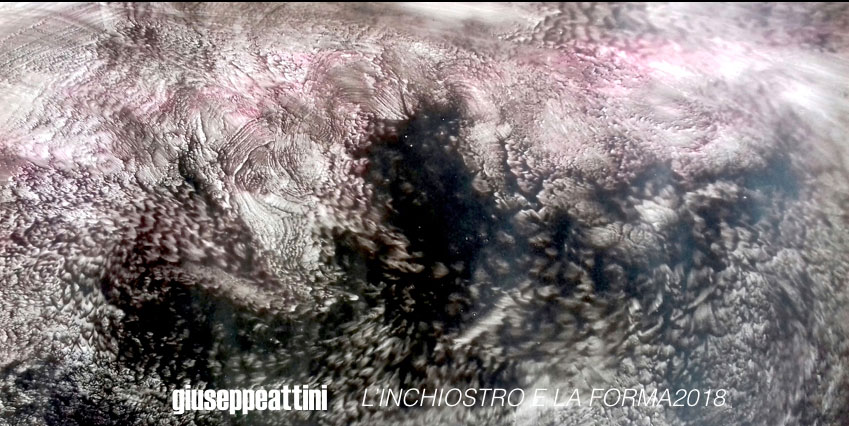
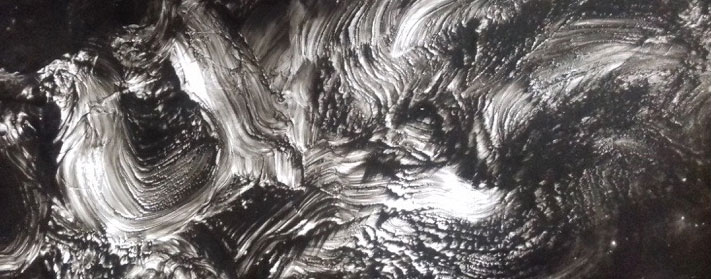
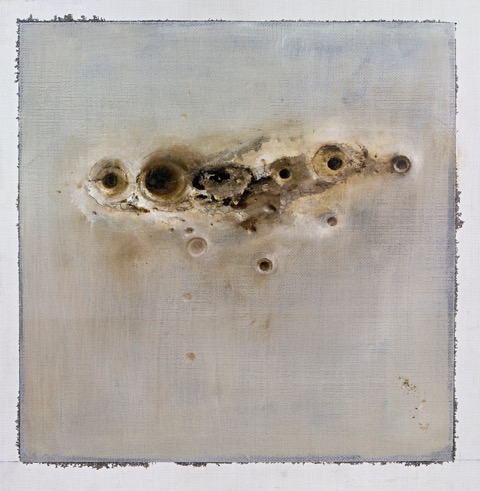
В торжественном открытии примут участие представители Мингорисполкома, дипломатического корпуса и Министерства культуры Беларуси.
- Подготовка к проведению этой выставки продолжалась два года под руководством Чрезвычайного и Полномочного Посла Республики Беларусь во Франции Павла Латушко и художника, одного из учеников Михаила Савицкого, Виктора Альшевского.
В основном это картины столичных художников из разных стран. Исключение - Россия, которую представляют работы мастеров не только Москвы, но еще Санкт-Петербурга и Владивостока.
Выставка продемонстрирует картины и знаменитых художников Зураба Церетели, Михаэля Фукса и многих других.
- Художественные направления абсолютно разные - абстракционизм, портретная живопись, картины, написанные при помощи цифровой печати, и так далее, - прокомментировала sb.by старший научный сотрудник ГУ "Музей истории Минска" Мария Королева.
Посетители смогут ознакомиться с работами художников из дальнего и ближнего зарубежья - России, Украины, Польши, Австрии, Чехии, Португалии - всего 25 стран.
Более 80 работ представят на суд любителей, ценителей и знатоков изобразительного искусства.
- Выставка "От Лиссабона через Минск до Владивостока" – это арт-проект, направленный на то, чтобы подчеркнуть объединяющую силу искусства в современном мире, своеобразный коллективный манифест художников из разных стран Европы, которые встречаются в рамках общей экспозиции в Минске, чтобы заявить свой противовес тем негативным, разобщающим людей явлениям, которые мы наблюдаем сегодня в политике. И для нас особенно важно, что такая выставка проходит в столице Беларуси, – пояснил Павел Латушко, передает Sputnik Беларусь.
Стоит дополнить, что выставка пройдет под официальным патронажем ЮНЕСКО и при поддержке Министерства иностранных дел Беларуси.
Подготовила Наталья Часовитина
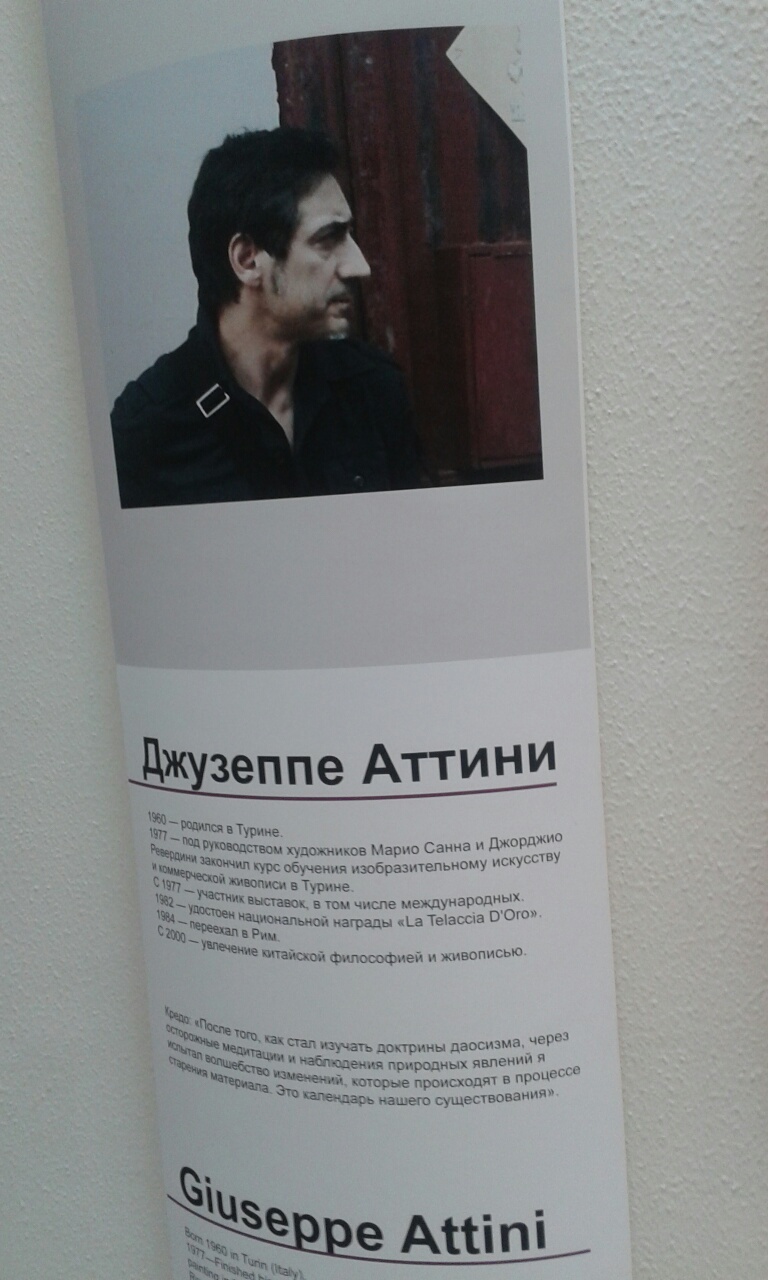

Упершыню Джузэпэ Аціні прадставіў свае працы ў Беларусі ў 2009 годзе на міжнароднай біенале жывапісу ў Нацыянальнай бібліятэцы Беларусі. З таго часу ён стаў частым госцем міжнародных біенале акварэлі ў Полацку і Мінску, у 2013 г. персанальная выстаўка мастака адбылася ў галерэі «Акадэмія» Беларускай дзяржаўнай акадэміі мастацтваў.
Джузэпэ Аціні стварае свае працы на аснове прынцыпаў кітайскага жывапісу. Адзін з даследчыкаў яго творчасці Інь Жун назваў яго паслядоўнікам выбітных дасягненняў жывапіснага стылю Шаньшуй хуа (гор і вод), падкрэсліваючы, што ў сваіх карцінах мастак захапіў абодва ўнутраных аспекта культуры камянёў: матэрыяльнасць і дух аб'екта. Джузэпэ Аціні здолеў перадаць пачуццё сталасці і ў той жа час дынамічны стан і зменлівасць каменя і воднага струменя. Ён выходзіць за рамкі фізічнага аб'екта ў тэкстуры, у перфарацыі, такім чынам, перадае яго шматзначнасць і адухоленасць.
«Няўстойлівы» – новая выстаўка італьянскага мастака, дзе аб'ектам даследавання становяцца не персанажы або прастора вакол іх, а час як філасофская катэгорыя. Сюжэты набываюць пазачасавае гучанне. Шматслойныя вобразныя эфекты дасягаюцца складанай жывапіснай пластыкай – скупой і аскетычнай ў сілуэтна-лінейнай кампазіцыі, насычанай у няўлоўных адценнях чорна-белага колераў.
У работах Джузэпэ Аціні канкрэтны сюжэт узнімаецца да ўсведамлення ўсеагульнасці быцця. Гэта ўражанне дасягаецца злучэннем выяўленчай канкрэтнасці матыву і нагружанай формы. Аўтар фрагментуе малюнак, «уразаючы» яго ў прастору навакольнага рэальнага свету і ў той жа час «замыкаючы» у «камерны» памер твора.
Менавіта «камерны» памер выразна падкрэслівае сэнсавую насычанасць работ Джузэпэ Аціні. У такім памеры аўтар стварае вобраз, які адрозніваецца драматычнай напружанасцю, гарачай напоўненасцю пачуццяў, самапаглыбленасцю, музычнасцю або шматзначнай маўклівасцю. У яго стварэнні ўдзельнічаюць дэфармацыя аб'ёму, што нараджае актыўнае жыццё святлоценявых блікаў, экспрэсіўны характар фактуры, дыспрапарцыянальныя зрухі прадметаў. Усё гэта выдае імкненне мастака спазнаць і выявіць схаваны духоўны сэнс паказанага ім дзеяння.

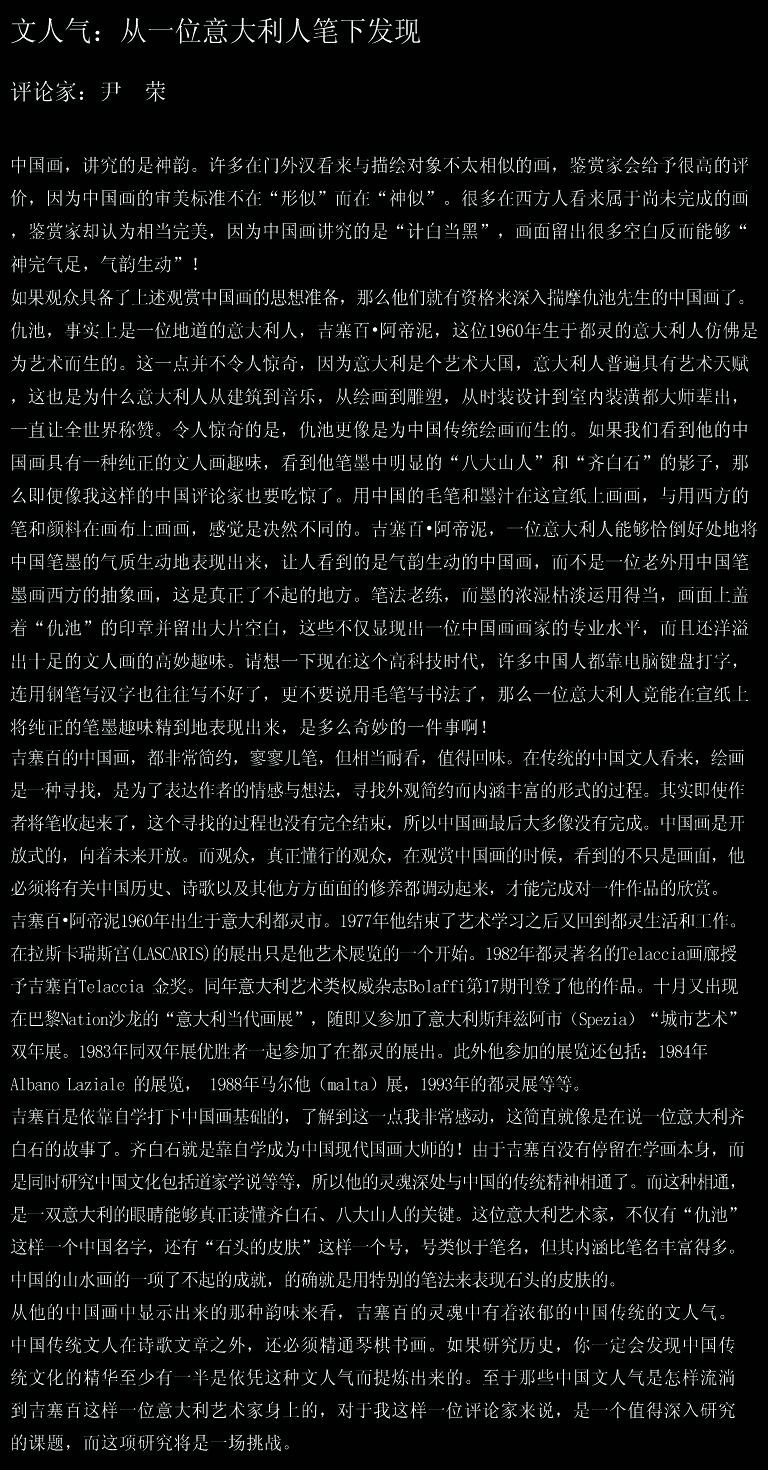

Lo spirito dei letterati: scoperte dal pennello di un italiano.
Yin Rong
Nella pittura cinese ciò che merita attenzione è l’eleganza spirituale. Di molti quadri che un profano giudicherebbe poco somiglianti all’oggetto rappresentato, i conoscitori potrebbero fornire una valutazione molto positiva, poiché i criteri estetici della pittura cinese non si basano sulla “somiglianza delle forme”, ma sulla “somiglianza dello spirito”. Molti quadri che agli occidentali sembrano non completati, possono invece ricevere l’apprezzamento dei conoscitori, poiché nella pittura cinese è fondamentale il rapporto tra spazi bianchi e spazi neri; se nel quadro rimangono molti spazi bianchi, non è detto che non possa essere considerato “completo dal punto di vista spirituale”, “vivido dal punto di vista dell’espressione artistica”!
Se il pubblico è dotato della suddetta preparazione per ammirare la pittura cinese, allora sarà qualificato a valutare in profondità attraverso un’attenta analisi la pittura cinese del signor CHOUCHI.
Chouchi è in realtà un italiano, Giuseppe Attini; questi (Torino – 1960), sembra essere nato per l’arte. Questo non deve stupire, perché l’Italia è il paese dell’arte e gli italiani sono comunemente dotati di un talento innato, il che spiega perché essi, dall’architettura alla musica, dalla pittura alla scultura, dalla moda alla decorazione d’interni abbiano dato vita a numerosi maestri che hanno sempre attirato l’ammirazione del mondo. Quello che stupisce è che Chouchi sembra nato per la pittura tradizionale cinese. Se consideriamo che la sua pittura cinese è dotata del gusto pittorico dei letterati e nel suo tratto compaiono rimandi a Bada Shanren e Qi Baishi, allora anche un critico cinese come me deve essere sorpreso. Dipingere con pennello e inchiostro di china cinesi su carta di riso e dipingere su tela con pennelli e colori occidentali danno sensazioni nettamente diverse. Giuseppe Attini è un italiano che può esprimere vividamente le qualità della pittura cinese, mostrandone tutta la sua viva espressività artistica, ma non si tratta di uno straniero che dipinge quadri astratti occidentali con gli strumenti della pittura cinese, e questo è un aspetto veramente eccezionale.
La tecnica pittorica rivela una notevole esperienza e la densità della china è sfruttata in modo adeguato; il fatto che sulla superficie del dipinto si trovi il timbro “CHOUCHI” e rimangano ampi spazi bianchi non solo evidenzia il livello di specializzazione di un artista di pittura cinese, ma trasmette pienamente il gusto superbo della “pittura dei letterati”. Si pensi al periodo attuale altamente tecnologico, in cui molti cinesi si affidano alla tastiera di un computer per scrivere i caratteri, non riuscendo a scriverli bene neanche con la penna stilografica e tanto meno essendo in grado di fare calligrafia col pennello, ebbene, quale sorpresa rappresenta un italiano in grado di esprimere sulla carta di riso un gusto pittorico genuino!
I dipinti cinesi di Giuseppe sono concisi, caratterizzati da pochi tratti, ma assai piacevoli, degni di essere ripensati. Secondo i letterati cinesi tradizionali, la pittura è ricerca, serve a esprimere il sentimento e il modo di pensare dell’autore, rappresenta un processo di ricerca di una forma dall’aspetto semplice ma dal contenuto ricco. In realtà, sebbene chi crea l’opera abbia sistematizzato la tecnica, questo processo di ricerca non è ancora completato, quindi alla fine la pittura cinese sembra per la maggior parte non completa. La pittura cinese è aperta, aperta verso il futuro. Tuttavia il pubblico, quello dei veri addetti ai lavori, quando ammira un dipinto cinese, non vede solo la superficie del dipinto, ma deve mettere in moto la raffinatezza dell’educazione legata alla storia cinese, alla poesia cinese e a molti altri aspetti: solo allora potrà ammirare l’opera in modo completo.
Giuseppe si è creato le basi della pittura cinese da autodidatta; quando l’ho saputo, sono rimasto molto colpito, poiché sembrava ripetersi la storia di un Qi Baishi italiano. Qi Baishi è diventato un maestro dell’arte cinese moderna da autodidatta! Poiché Giuseppe non si è trattenuto nello studio in sé della pittura, ma ha allo stesso tempo approfondito la cultura cinese, compreso il Daoismo, la profondità della sua anima è conforme allo spirito tradizionale cinese. Questa analogia è la chiave per cui degli occhi italiani possano veramente comprendere Qi Baishi e Bada Shanren. Questo artista italiano non solo ha il nome cinese “CHOUCHI”, ma ha anche il soprannome “Pelle di Pietra”, simile a un nome d’arte, ma il suo contenuto è ancor più ricco del nome d’arte. Uno dei risultati eccezionali della pittura cinese dei monti e delle acque (shanshui hua) è veramente quello di esprimere attraverso uno stile pittorico particolare la pelle della pietra.
Per quanto riguarda il gusto artistico che traspare dai suoi dipinti cinesi, nell’anima di Giuseppe è presente il ricco spirito dei letterati della tradizione cinese. I letterati della tradizione cinese, oltre che nella lirica, dovevano essere versati nella musica, negli scacchi, nella calligrafia e nella pittura. Se si studia la storia, sicuramente si potrà scoprire che almeno la metà dei massimi esponenti della cultura tradizionale cinese erano educati secondo questo spirito dei letterati. Come lo spirito dei letterati si sia potuto riversare in un artista italiano, secondo il mio punto di vista di critico, è argomento che merita di essere approfondito e questo approfondimento costituisce una vera sfida.

“ATTRAVERSANDO”: ...the pathway to the heart of stones.
Entering the spirit of stones in eastern countries, mainly in China, needs getting to the heart of aesthetic philosophic and also poetic concepts.
The art of stones is itself reorganization of poetic feelings.
In China shangshi and gongshi, the Scholars’Stones, must essentially be capable to represent wide sizes. This capability is in relation to its complex and dynamic configurations and the way such configurations evoke the creative power of the earth.
The rock is a micro-organism of the mountain, so the mountain is a micro-organism of the universe. The levels expand outwards and contract inwards.
The mountains – or rocks – reject and swallow their fogs. On the other hand, caves and tunnels are passages leading to immortality.
At a more sophisticated level we find that the spring of life, its value and its understanding is in interiority, while exteriority necessarily defines the moment being.
On the other hand interiority without exteriority had no meaning for the Chinese world.
On the basis of these concepts, the lovers of this art defined the quality criteria of stones: shou (thin), tou (with hollows), lou (canals), zhou (texture). The hollow texture of tou is inextricably related to shou and zhou just because of the constant transformation process.
As remarked by Shen Hao, the 17th century writer of the mountains, if they do not transform, then call them dead mountains.
That is what a stone is: the classic Taihu stone, with the rhythms of its form similar to heaps expanding from a narrow base in a changeable aspect. Its thinness keeps the energy of its changes. Its texture brings up its vitality and expands into hollows and caves that give access to its inner part.
By interacting with the stone changes, these recesses invite to the in-out movements through which structure and understanding are reached.
We like the rock because it exemplifies the universe work well and coherently and its endless individuality as well.
For the creative action of the universe, the word is shen: at the end of the cultural spectrum it means “spirit” in the sense of an entity living in a mountain or in a tree or in a stone, generally the centre of a local cult.
On the other hand it is pure action, embodied in its own configuration. In that meaning the qualities of a rock can reach religious intensities.
Tu Weiming wrote: “Rocks are not static objects but dynamic processes with their particular configuration of energetic things. We must not go too far to suggest that now we can speak about different grades of spirituality of rocks”.
In his painting Giuseppe Attini has captured both intrinsic aspects of the stones culture: the materiality and the spirit of the object. He can convey the sense of permanence with a definite and unequivocal trait that defines the dynamic and changeable status of the stone at the same time. He goes beyond the physical consistency, in the texture, in the perforations, thus getting to a strong emanation of interiority and spirituality.
Chiara Padrini
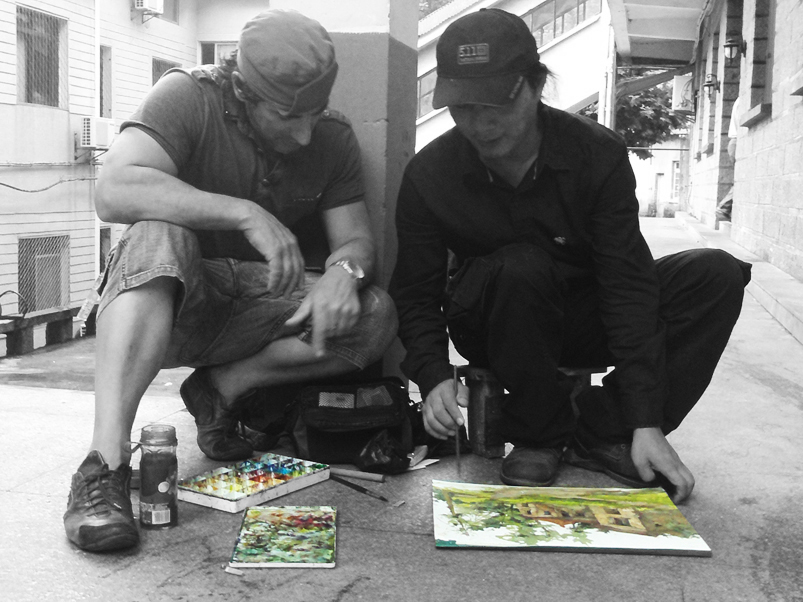
BIOGRAPHY
Giuseppe Attini is born in Torino in 1960
When he was thirteen he approached the art world, frequented various painting clubs in Torino and since the
beginning he devoted himself to a very hard study of oil painting
1977 - Guided by the painting masters Mario Sanna and Giorgio Reverdini he finished his study of graphic arts
and commercial painting held by Regione Piemonte in Torino
Following his natural bent for ancient art during those years Giuseppe Attini went deep into the study of the
historical silver works of Palazzo Madama in Torino and he held his first personal show at Palazzo Lascaris in
Torino
It was a many shows period that gathered him lots of awards and aroused the interest of the media reviews.
1982 - Recorded on the Bolaffi art catalogue No. 17 and awarded with the national trophy “La telaccia d’oro”
In October he participated in the French Show “La pittura contemporanea italiana” (The contemporary Italian
Painting) at the Salon des Nations in Paris
1983 - Carlo Occhipinti critic and art director of “Biennale d’Arte città de La Spezia” (Biennal Art Exhibition,
La Spezia) invited and encouraged him: he included him in the Biennale and after the “Segnalati dalla Biennale”
(Reported by Biennale) he introduced him to the Promoter of Fine Arts in Torino. In the same period Attini
intensified the ancient painting techniques with his friends Americo Carella and Sergio Albano, painters too
1984 - Moments and Italian Presence, Biennial Albano Laziale
1986 - He met the painter Lorenzo Alessandri a master and a great guiding light both for teaching and sharing
of Fantastic Painting
1988 - “Omaggio a Caravaggio” (Homage to Caravaggio) - Biennale in Malta
1992 - Personal Show “La Coda” at the church of Santa Maria Maggiore in Avigliana (Torino) cared by Monica
Mantelli
1993 - Pegaso Gallery in Torino cared by Giovanni Cordero
1996 - Personal Show “Amor Mortis” at Malgrà Castle in Rivarolo (Torino) cared by Aldo Spinardi
2000 - He attended the FKB school for the art study of Zen aesthetics. At the same time he started studying
and practising the Chinese painting, particularly interior xie yi
2004 - “Le tenébre, mais la rose” cared by E. Colombotto Rosso at Villa Vidua Conzano (Alessandria)
2005 - The great interest Lingnan aesthetics drove Attini to a new search through the Chinese philosophy
to reach the sublime soul of rocks
2007 - September - Personal show “Pittura dello spirito” (Painting of spirit) at Carmagnola Town Hall (Torino)
cared by Monica Mantelli
2007 - December - “La poesia oltre la morte” (Poetry beyond death) a particularly interesting show for people
who search about “ what is spiritually perceptible or dynamic extension of the whole process of things and
the infinitively diversified play of its polarities” Fujisato at Nole di Grange (Torino) cared by Monica Mantelli
2008 - March - “Il respiro del cielo” (The breath of heaven) at Unione Industriale in Torino - Chinese ink paintings
cared by Antonio Miredi and Chicca Morone
Invited to the World Conference BCI-IBS he exhibited the work “Lo spirito dei letterati” (The spirit of literary
men) in Saint Vincent (Aosta) cared by Chiara Pedrini and Yin Rong
2009 - August he was guested at the Chinese Watercolour Festival in Lu Shan, China
2009 - September he was invited to the International Biennal Exhibition Watercolour Painting Minsk,
Belarus
2010 - February “Better city, better life: exchange exhibition of Chinese and foreign artworks” at Liu Haisu
Art Museum Shanghai, China
2010 - April “Shanghai International Artwork Expo” China
2011 - From 3 June 31 July 3 edition of the biennial International Watercolor Polotsk in Belarus National Museum-
From 17 August to 11 September International Watercolor Biennial in Belarus Minsk Palace of Art
2011 - From October 29 to November 14 EXILYUM personal gallery Domus Turkish Ferrara
by Alice Bretta.
2012 - May 16 to 30 staff "Metamorphosis" BelArt Gallery Minsk Belarus
2012 - From 15 to 23 June "6th International Biennial of Ferrara"
2012 - From 20 September to 28 October staff SEGUITRE IL TEMPO "Metroquadroarte Gallery" Rivoli
2013 - 4 Biennal Water+Color Belarus Polotsk-Minsk-Novgorod
2013 - Museum Belarusian State Academy of Arts Minsk
2016/7 - From 22 December 2016 to 5 November 2017 - From Lisbon to Vladivostok via Minsk
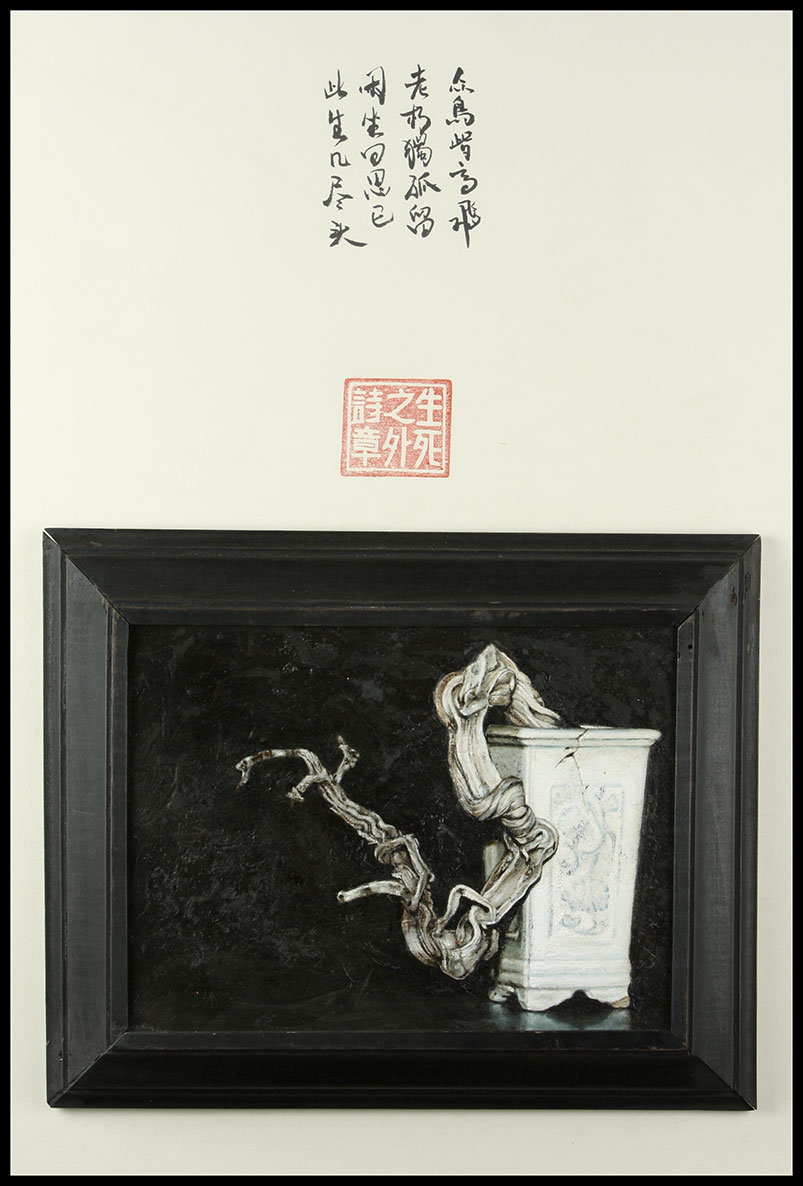
©2008 - 2013 Giuseppe Attini • All right reserved